Commentaires / Questions (35)
![]() Maryam Rabie a écrit:
Maryam Rabie a écrit:
How we can adjust the pattern to less stitches?For example if I cast on 72 stitches, is it possible to reduce number of stitches in every pattern? A1 changes to 12 stitches.
05.11.2025 - 14:30DROPS Design a répondu:
Hi Maryam, of course you can do this. Happy knitting!
27.11.2025 - 21:34
![]() Justyna a écrit:
Justyna a écrit:
Witam. Niestety mam problem z przerobieniem schematu A1. W 5 okrążeniu zaczynam narzutem i kończę 2 oczka razem. W okrążeniu 6 mam przerobić oczko prawe które wychodzi w narzucie który miał być przerobiony przekręcony na prawo? Czy oczko prawe i przekręcenie na prawo ma być zrobione równocześnie na narzucie? Z góry dziękuję
18.11.2024 - 20:44DROPS Design a répondu:
Witaj Justyno, zobacz film video jak wykonać tą czapkę TUTAJ. Pozdrawiamy!
19.11.2024 - 09:17
![]() Emilia a écrit:
Emilia a écrit:
Hello! Does round needle length 40 cm mean the whole length from the top to the top or just the flexible middle part? Is it possible to use longer, then 40 cm?
24.09.2024 - 17:33DROPS Design a répondu:
Dear Emilia, usually a 40 cm needle is measured from tip to tip, you can use a longer one such as a 80 cm and work with the magic loop technique, see video. Happy knitting!
25.09.2024 - 08:17
![]() Georgette Keneally a écrit:
Georgette Keneally a écrit:
Your video for the White Amaryllis hat shows the first stitch is a purl. Is that a Norwegian purl?
15.05.2024 - 20:08DROPS Design a répondu:
Dear Georgette, yes, however, it really does not matter what way you purl, as long as you pay attention to which way your stitches sit on the needles. Happy Knitting!
16.05.2024 - 01:21
![]() Ellen Sawyer a écrit:
Ellen Sawyer a écrit:
I was wondering, if you could possibly put this pattern instructions into the English language for me. I would LOVE to make this! Thanks in advance.
14.12.2022 - 16:29DROPS Design a répondu:
Dear Mrs Sawyer, sure, all our patterns are available in English, click on the scroll down menu below the photos and choose "English (US, in)". Happy knitting!
15.12.2022 - 09:02
![]() Imelda a écrit:
Imelda a écrit:
The piece is worked in the round with circular needle. You first work a displacement in the rib, then work stockinette stitch before finishing with rib. What is a displacement. How is it worked.
09.11.2022 - 20:19DROPS Design a répondu:
Hi Imelda, A displacement is when the pattern (in this case the ribbing) is moved sideways and the ribbing becomes diagonal instead of straight. This displacement is created by following the diagrams at the bottom of the pattern. Happy crafting!
10.11.2022 - 07:20
![]() Danuta a écrit:
Danuta a écrit:
Bardzo podoba mi się ta czapka kupiłam sobie włóczkę na tą czapkę, no i uczę się, polecam na wielu forach właśnie waszą stronę ze względu że ktoś tak jak ja dopiero zaczyna ma dokładnie opisane Jak robić no i filmiki są mega mega pomocne.
17.12.2021 - 23:26DROPS Design a répondu:
Danusiu bardzo dziękujemy! Pamiętaj, że nawet jeśli nie będziesz mogła czegoś znaleźć, czy pojawi się jakakolwiek wątpliwość możesz śmiało pisać. Żadnych pytań nie pozostawiamy bez odpowiedzi. Serdecznie pozdrawiamy!
20.12.2021 - 08:50
![]() Georgette a écrit:
Georgette a écrit:
Hat: Lima is 4 ply yarn. Do I double it an use two strands plus the kid silk (3rd strand) ? I'm a new knitter. The Drops US locations no longer have any color I desire. Can you suggest where else I might order the yarn. Thank you
20.02.2021 - 04:25DROPS Design a répondu:
Dear Georgette, this hat is knitted with 1 Lima and 1 kidsilk held together. For the yarn, you might try our find a store page HERE. Do not forget to check the "other stores shipping to the US" and "stores that ship worldwide" pages. Happy Knitting!
20.02.2021 - 12:04
![]() Ruth Leibbrandt a écrit:
Ruth Leibbrandt a écrit:
Your prompt response to my question regarding the White Amaryllis neck warmer is both helpful and greatly appreciated. Incidentally, love the off white yarn Lima and the mohair that I purchased from you.
02.10.2020 - 14:23
![]() Ruth Leibbrandt a écrit:
Ruth Leibbrandt a écrit:
What does your pattern for White Amaryllis mean when it says "you first work a displacement in the rib, then work stocking stitch before finishing with rib". The pattern does not even mention a rib. I am knitting the warmer and find the directions difficult, although I am an experienced knitter. I purchased the yarn stated in the pattern from you.
02.10.2020 - 00:25DROPS Design a répondu:
Dear Mrs Leibbrandt, you start neck warmer wit diagram A.1 and while working diagram in the round you will displace automatically (with the Yarn over and K2 tog) the rib. After A.1 has been worked, all stitches are worked in stocking stitch, you continue in stockng stitch then work rib K1 twisted/P1. Happy knitting!
02.10.2020 - 08:31
White Amaryllis#whiteamaryllisset |
||||||||||||||||
|
|
||||||||||||||||
Bonnet et snood tricotés en côtes avec 1 fil DROPS Lima et 1 fil DROPS Kid-Silk.
DROPS 192-4 |
||||||||||||||||
|
TECHNIQUES EMPLOYÉES: ------------------------------------------------------- POINT FANTAISIE: Voir les diagrammes A.1 et A.2. Voir diagramme approprié à la taille. ------------------------------------------------------- L'OUVRAGE COMMENCE ICI: ------------------------------------------------------- BONNET - PETIT APERÇU DE L'OUVRAGE: Se tricote en rond sur aiguille circulaire, continuer avec les aiguilles doubles pointes quand nécessaire. BONNET: Monter 96-108 mailles avec l'aiguille circulaire 4,5 et 1 fil Lima + 1 fil Kid-Silk (= 2 fils). Tricoter A.1 (= 16-18 mailles) 6 fois au total en largeur. BIEN CONSERVER LA MÊME TENSION QUE POUR L'ÉCHANTILLON! Quand A.1 a été tricoté 1 fois en hauteur, on a 90-102 mailles. L'ouvrage mesure environ 9-10 cm. Continuer en jersey. Quand l'ouvrage mesure 17-18 cm depuis le rang de montage, tricoter 6 fois A.2 (= 15-17 mailles) au total en largeur. Quand A.2 a été tricoté 1 fois en hauteur, on a 36 mailles. Tricoter toutes les mailles ensemble 2 par 2 = 18 mailles. Tricoter toutes les mailles ensemble 2 par 2 = 9 mailles. Couper les fils et les passer dans les mailles restantes, serrer les fils et sécuriser. Le bonnet mesure environ 26-28 cm de haut en bas. ------------------------------------------------------- SNOOD - PETIT APERÇU DE L'OUVRAGE: Se tricote en rond sur aiguille circulaire. On tricote d’abord un décalage des côtes, puis on continue en jersey et on termine par des côtes. SNOOD: Monter 128-144 mailles avec l'aiguille circulaire 4,5 et 1 fil Lima + 1 fil Kid-Silk (= 2 fils). Tricoter 8 fois A.1 (= 16-18 mailles) au total en largeur. BIEN CONSERVER LA MÊME TENSION QUE POUR L'ÉCHANTILLON! Quand A.1 a été tricoté 1 fois en hauteur, on a 120-136 mailles. L'ouvrage mesure environ 9-10 cm. Continuer en jersey. Quand l'ouvrage mesure 22-24 cm depuis le rang de montage, augmenter 22-24 mailles à intervalles réguliers (c'est-à-dire augmenter en faisant 1 jeté après alternativement chaque 5ème et 6ème maille) = 142-160 mailles. Tricoter les jetés torse au tour suivant pour éviter les trous! Tricoter en côtes (= 1 maille torse à l'endroit, 1 maille envers). Quand l'ouvrage mesure 26-28 cm depuis le rang de montage, rabattre les mailles comme elles se présentent = torse à l’endroit au-dessus des mailles torse à l'endroit et à l’envers au-dessus des mailles envers. |
||||||||||||||||
Légende diagramme(s) |
||||||||||||||||
|
||||||||||||||||
 |
||||||||||||||||
 |
||||||||||||||||
Vous avez terminé ce modèle?Alors taguez vos photos avec #dropspattern #whiteamaryllisset ou bien présentez-les dans la galerie #dropsfan Vous avez besoin d'aide pour ce modèle ?Vous trouverez 18 tutoriels vidéo, une rubrique commentaires/questions et plus encore en vous rendant sur la page du modèle sur garnstudio.com © 1982-2025 DROPS Design A/S. Tous droits réservés. Ce document, y compris ces sous-sections, est protégé par les droits d'auteur (copyright). Apprenez-en davantage sur ce que vous pouvez faire avec nos modèles en bas de chacune des pages de notre site. |
||||||||||||||||












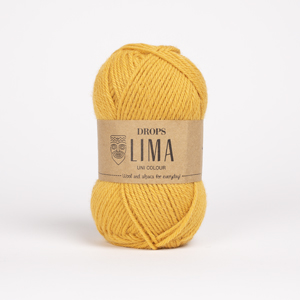
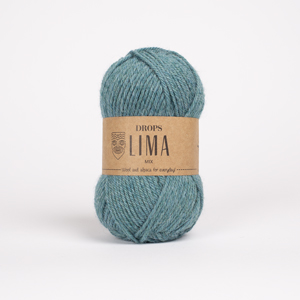
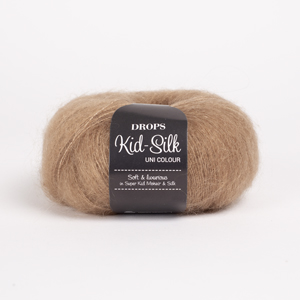





































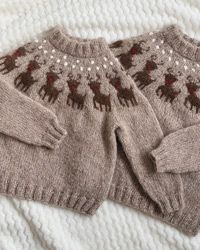

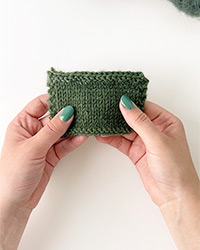

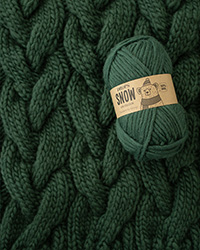
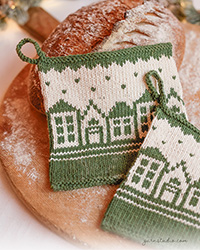
Poster un commentaire sur le modèle DROPS 192-4
Nous aimerions connaître votre avis sur ce modèle !
Si vous souhaitez poser une question, merci de bien vouloir vérifier que vous avez choisi la bonne catégorie dans le formulaire ci-dessous afin d'accélérer la réponse. Les champs obligatoires sont indiqués par une *.